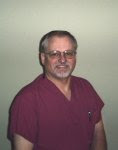Thought for the day: “A great many people think they are thinking when they are merely rearranging their prejudices.” —William James.
Nutrition Blurbs
- Mitochondrial Dysfunction: mitochondria are the power houses of cells. Dysfunction has been linked to diabetes, cancers, heart problems, aging and brain function. A natural compound may promote new mitochondria formation in cells. PQQ (pyrroloquinoline quinone).
- Magnesium may protect women against sudden cardiac death.
- Higher vitamin D levels is associated with lower risk for bladder cancer. Patients will leukemia and vitamin D insufficiency may face earlier mortality risks.
- Olive Oil helps protect the liver from oxidative stress and aids in cardiac fat oxidation.
- Curcumin (household spice) may help prevent and treat fatty liver disease damage.
- Cinnamon Extracts may help reduce diabetes and heart disease risk factors.
- Fish Oils may help diabetes and one component DHA may help promote recovery from stroke.
- Ceramides (a fat-soluble constituent of normal cells) in addition to aiding skin aging may also help lower total cholesterol, increase HDLs, enhance insulin sensitivity and help prevent colon cancer.
- Anthocyanins (pigmentary compounds in fruits) may help with free radical damage, cancer, heart disease, metabolic syndrome, and also enhance night vision.
- Glucose-control can be assisted with chromium, Indian gooseberry (amla), shlajit (rich in fulvic acid), brown seaweed and cinnamon.
- Carnosine in studies at high doses has been shown to boost longevity, helping cardiovascular health, combatting elevated glucose, safeguarding the brain, and containing anti-cancer properties. Branched chained amino acids were also liked to increasing lifespan in mice.
- Multi-vitamin use lowers heart attack risk in women.
- Reduced testosterone levels is linked to increase mortality in men.
Herniated Discs
What is a Herniated Disc? The disc can be viewed a lot like a jelly donut. It is somewhat circular with an outer area and a center or core (nucleus). When the core bulges into the outer layer it is a bulging disc and can press on sensitive nerve structures. When it breaks into the outer layer (like the dough but with the consistency of crab meat) it is a herniation. Sometimes it breaks totally out of the disc and becomes a free fragment which can be a serious condition causing loss of bowel or bladder function or numbness in the groin (cauda equina syndrome)-usually a surgical emergency.
What Causes a Herniated Disc? The causes are many. Basically, weakness in the outer layer of the discs or the inability of the disc to handle the pressure load of the nucleus causes the fibers to rupture allowing the nuclear material to escape its containment. Lifting improperly, traumatic injuries, coughing, sneezing, and straining activities have all resulted in disc herniations.
What are the Symptoms of a Herniated Disc?
- Pain: pain can be severe in the back and leg(s). If the pain is immediately more severe in the leg, we are concerned about a free fragment (sequestered disc). Pain is usually worse with sitting.
- Radiating sciatic pain (radiculopathy).
- Muscle weakness
- Numbness and Tingling
What are my Treatment Options?
- In less severe cases, conservative management works effectively including: spinal manipulation (chiropractic), physical medicine modalities for pain control (interferential current, ice, laser), acupuncture, rehabilitation exercises, medications.
- More severe cases may require epidural steroid injections, surgical excision of the herniation, disc replacement or fusion.
- Cauda equina symptoms generally require emergency surgery.



